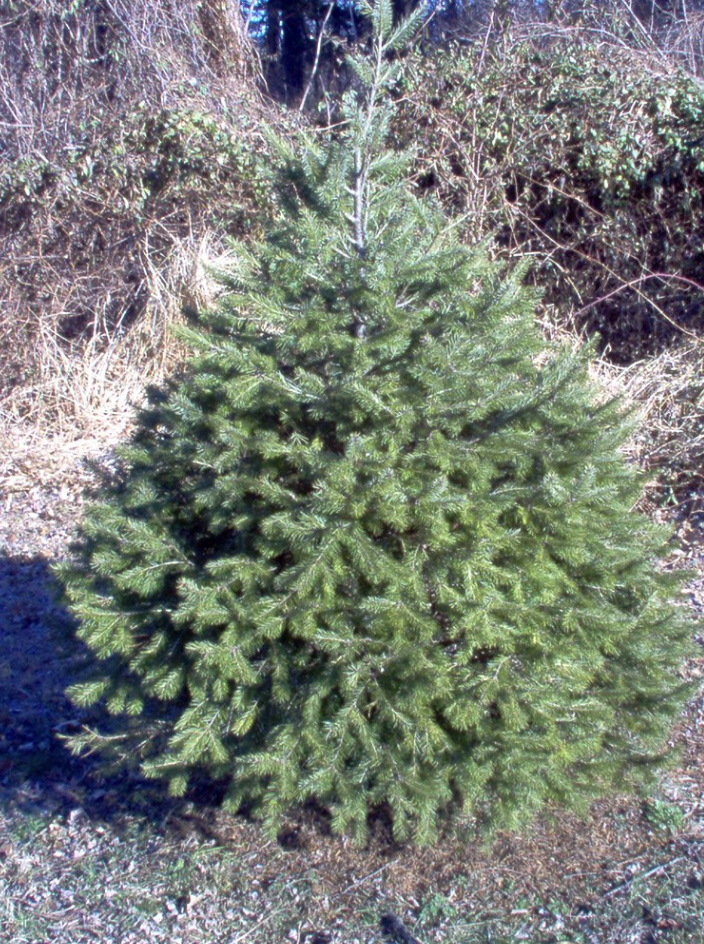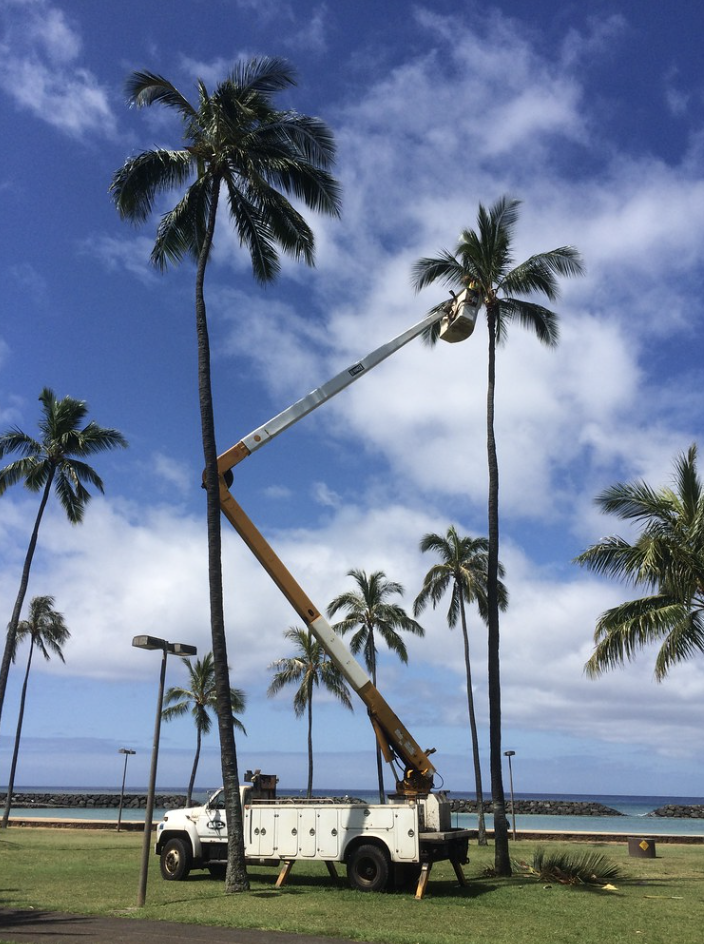How Often Should Trees Be Trimmed? Everything You Need To Know

How often should you trim your trees?
Depending on the tree's type and the tree's age, how often you should trim your trees will vary. We cover everything you need to know below.
WARNING: Poor trimming can jeopardize the health of the tree which will cause you and your property more headaches long term. If you don't know how old your tree is or the type of tree you have, you should contact a professional arborist before making any cuts.
QUICK FACTS:
- Mature trees need to be trimmed every 3 to 5 years.
- Young trees need to be trimmed every 2 to 3 years.
- Fruit Trees are trimmed every year.
- Evergreen conifers can go years without needing to be trimmed.
Besides knowing the frequency of trimming, it's also imperative to know how much to trim a tree. Plus, you should be able to spot signs that a tree needs trimming.
Table of Contents
Why Should You Trim Trees?
Tree trimming helps the tree in a bunch of different ways:
- it prevents the spread of diseases to help keep the tree and all surrounding trees healthy for years to come.
- it keeps the tree strong and durable so that it can grow into maturity.
- it minimizes the risk of breakage during storms to avoid any unwanted damage to your home or property
- it ensures the lower branches of the tree get the sunlight and air they need to grow - without this, the lower branches will eventually die.
If you live in an area prone to storms, you might need to trim your trees more frequently. This will help to prevent damage due to branches breaking off, which can fall on nearby structures.
As a tree grows and expands its crown's weight increases. Trimming helps reduce the crown's weight, minimizing the risk of breaking branches.
Overgrown trees can cause obstructions in electric lines and gutters. They can also block views from your home. Therefore, you need to trim them periodically.
WARNING: You should contact a professional arborist before making any cuts or trimming any trees near power lines. Do not trim trees near power lines without contact an arborist or local official.
How Often To Trim Trees By Age
As mentioned earlier, trimming frequency depends on the tree type and age. We'll start with age:
- Young Trees
- Mature Trees
Young Trees
You should trim young trees every 2 to 3 years to ensure they grow evenly. Arborists report that trimming young trees helps:
- Remove dying, diseased, dead, and broken branches
- Establish a strong structure and growth form
- Thin heavy branches
- Reduce risk to nearby structures
It also helps train the tree's growth. Once the tree matures, you can reduce the frequency of trimming to every 3 to 5 years. Here's how you should go about it:
- 1st Year: Remove the weaker steam if the tree has developed a vertical stem or a second leader. Plus, remove any broken or damaged branches.
- 2nd and 3rd Year: Shape the branches and the crown. Cut back on any crossing, rubbing, or weak branches. Also, cut back on branches growing towards the tree's center or crossing another branch to obstruct air and light.
A newly planted tree does not require extensive trimming. Only remove diseased, dying, or broken branches.
"Trees give peace to the souls of men"
- Nora Waln
"Except for when it's time to trim them..."
- Carl Anderson, Sweet New Earth
Mature Trees
As trees grow, they require less pruning. Once every 3 to 5 years is sufficient for most mature trees. The primary purpose of trimming at this stage is to get rid of dead, dying, diseased, or crossing branches.
You should also trim to reduce the tree's height or spread. Sometimes, you might need to trim to enhance the tree's aesthetics or to improve its health.
Don't go crazy with the aesthetics. Work to promote the tree's natural beauty.
How Often To Trim Trees By Tree Type
Different tree types have different schedules. Here are some tree types to consider:
- Evergreen Trees
- Fruit Trees
- Oak Trees
- Palm Trees
- Flowering Trees
Evergreen Trees

Photo Credit: Eric Lewis
Evergreen conifers should be trimmed as little as possible. When you do trim them, plan for late winter or early spring however the timing isn't as critical as with some other tree types.
When trimming evergreen trees, don't cut over one-third of the foliage. In most cases, you'll only need to trim the diseased or dead branches. Keep the pruning to a minimum.
If an evergreen tree does not have a dominant vertical stem or a leader, you should prune it. That will help the tree develop a single main stem. Never top the tree leader of an evergreen.
Pine trees don’t require too much regular trimming. You usually only trim them if the tree was damaged. When trimming pine trees, don't cut too many needles. That way, you won't put too much stress on the tree.
Broadleaf evergreens are pruned in a way more typical to deciduous trees.
Fruit Trees
You should trim fruit trees every year in late winter to adjust their structure. It's best to prune fruit trees in winter as it has the most negligible effect on the tree's health and hardiness. Once the fruit tree structure has been trained into the tree, you don't need to prune as much.
But if you want to trim the tree to control its growth, early spring is the right time, before the buds break. The fruit tree is still dormant at this time. Meanwhile, if there's a diseased branch, you can trim it at any time of the year.
Oak Trees
Trim oak trees every 2 to 3 years to prevent the branches from growing too long. Since oak trees grow slowly, there's no need to prune them annually.
What about oak wilt?
Oak wilt is a disease that causes the tree's leaves to turn brown and eventually die. The disease is spread by beetles that bore into the tree's trunk. The beetles carry the oak wilt fungus (Bretziella fagacearum) and introduce it into the tree.
If you think your oak tree has oak wilt, you need to wait until summer or early winter to trim the tree. The beetles that carry the disease are most active from late winter to early spring so you want to avoid pruning during those months.
Palm Trees

Only trim palm trees when you notice dead fronds. It will typically only happen once or twice a year especially depending on the type of coconut tree. You will be able to tell because the fronds will look dead or decayed, and they'll be weighing down the other fronds of the tree.
Flowering Trees
The ideal time for trimming flowering trees depends on when they bloom. If a flowering tree blooms in fall or summer, prune it in early spring or late winter. Some examples of these trees are American holly, crape myrtles, and smoke trees.
Meanwhile, trees blooming in spring should be trimmed immediately after flowering. Some examples include crabapple, saucer magnolias, dogwood, and flowering cherries.
FAQs
Different tree types have different trimming protocols. Not only that, but the age of the tree will determine how much regular trimming the tree needs. The type of tree and size of the branches will determine the best tools to cut the branches of the tree.
If any of this seems confusing or scary, we get it. Your best bet is to contact a professional arborist local to your area so that they can inspect the tree and decide on the best care plan for you and your tree. As the old adage goes, "Trees give peace to the souls of men... except for when it's time to trim them."

Carl Anderson
Carl Anderson is an avid outdoorsman with a keen interest in writing about and reviewing tools. He has over 20 years of writing experience and the only time he isn't feverishly typing away at his computer is when he's outside in nature working on his projects. You can learn more about him here.
Join our community!
Join to receive guides, insights, and the latest gardening deals!
